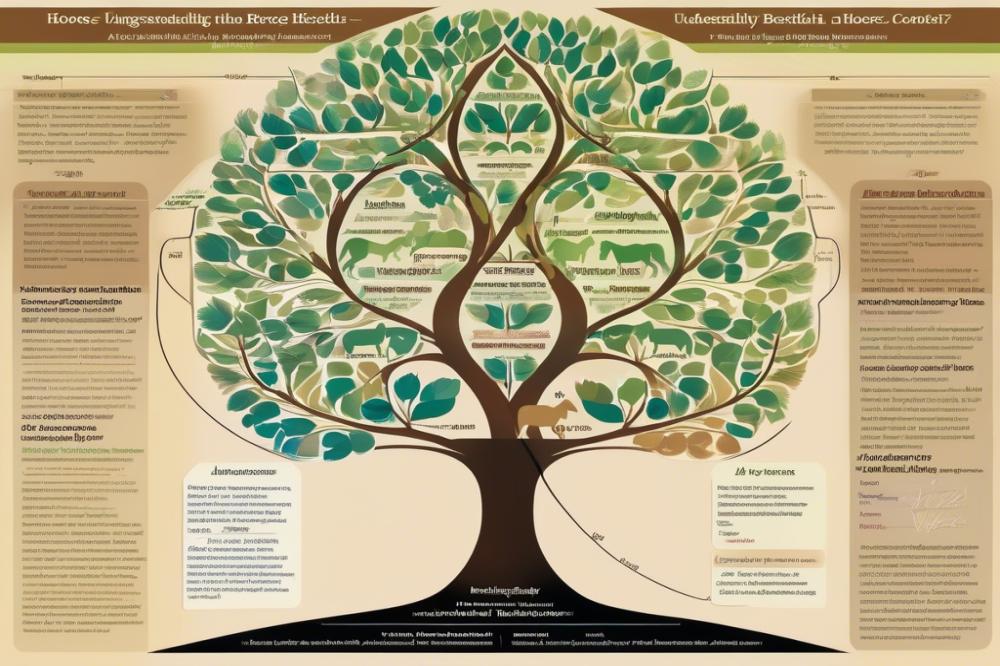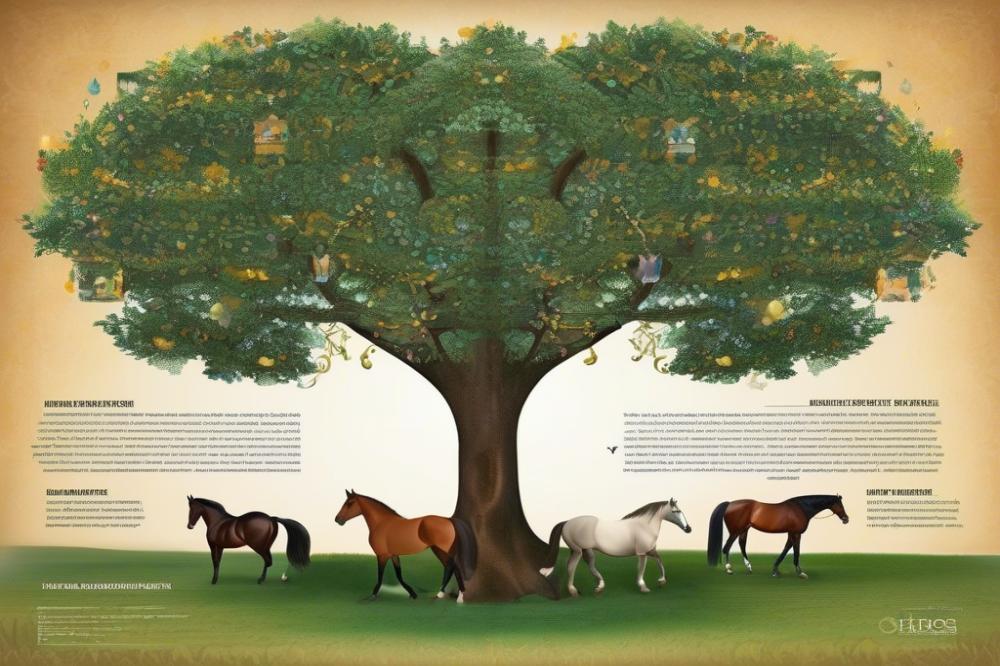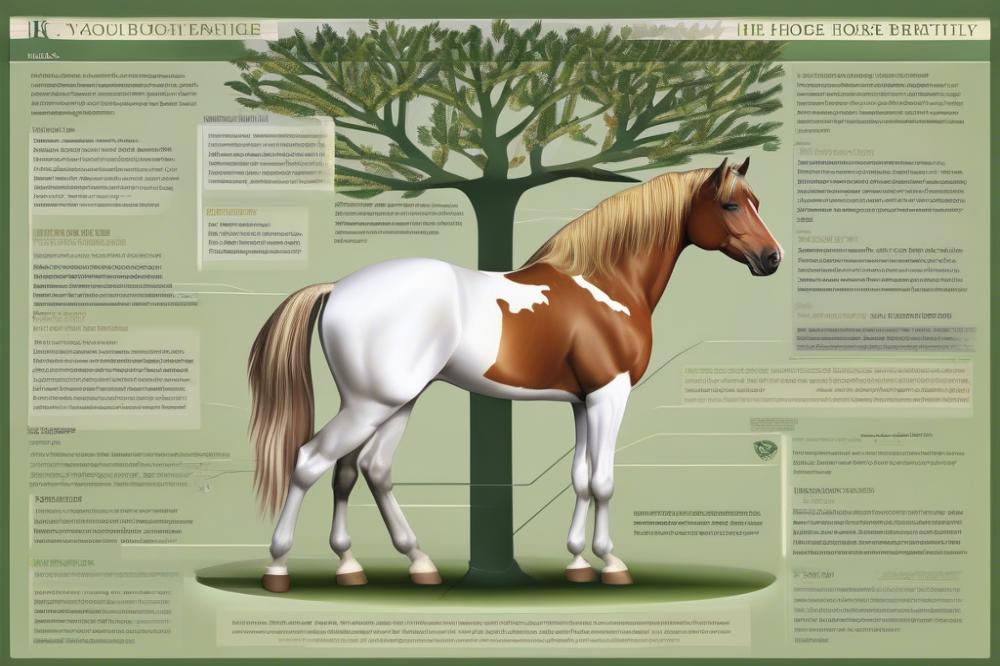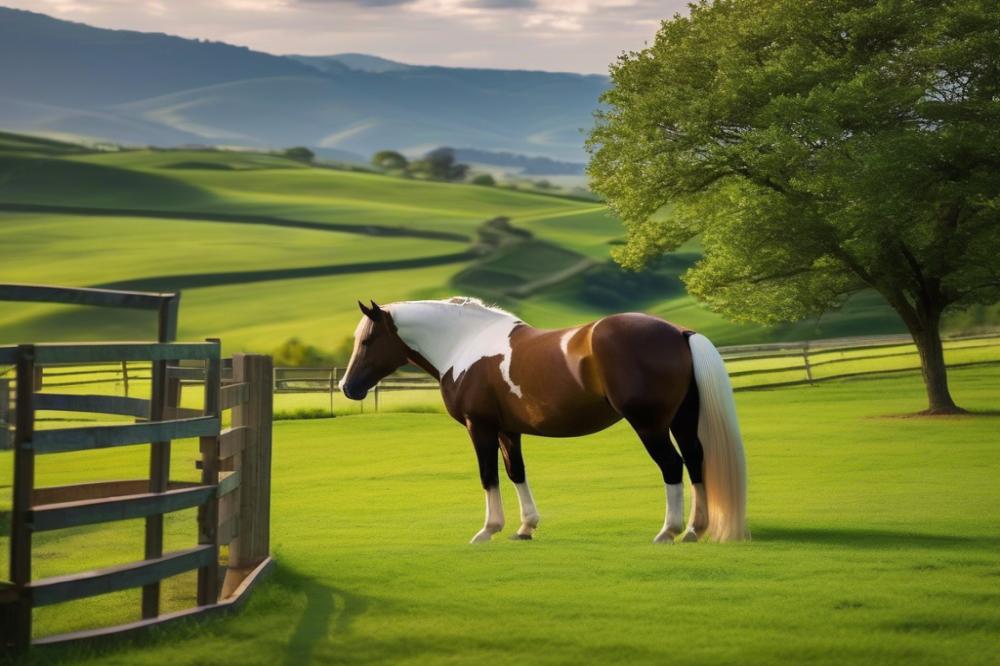Understanding Heritability in horse breeding
When considering horse breeding, it’s essential to grasp the fundamentals of genetics. Traits in horses can be influenced by various factors inherited from their parents. Breeders often aim to produce animals with desirable characteristics. A better understanding of how genetics works can help in making informed decisions about which horses to mate.
The role of genetics in equine production cannot be overstated. Breeders can boost the quality of their stock by selecting for specific traits such as speed, temperament, or conformation. Knowing which traits are heritable allows one to predict how offspring might turn out. This valuable insight can significantly impact breeding strategies and overall success.
This guide intends to provide a clearer picture of heritability in horse breeding. It will cover key concepts about genes and how they pass from one generation to the next. Readers will find discussions on the significance of genetic testing, the impact of environment, and the combination of traits in breeding practices. By understanding these factors, breeders can better manage their equine programs and produce quality horses.
Understanding heredity

In the context of horse breeding, heredity refers to the way traits and characteristics are passed from parents to offspring. This process influences everything from coat color to athletic abilities. Understanding this concept is crucial for breeders who wish to improve or maintain specific traits in their horses.
Genotype and Phenotype
To grasp the nuances of breeding, one must know the difference between genotype and phenotype. The genotype is the genetic makeup of an animal, a unique combination of genes inherited from its parents. In contrast, the phenotype is the visible expression of these genes. This includes physical traits and behaviors that can be seen or measured. For example, two horses may share the same genotype for coat color yet appear differently due to various environmental factors that affect phenotype.
The Role of Genetics
Genetics plays an integral role in how traits are inherited. Each parent contributes half of the genetic material. The combination of these genes can produce various traits in their offspring. Some traits follow simple patterns, like a single gene influencing coat color. Others are more complex, requiring multiple genes to work together. Understanding these patterns helps breeders predict the characteristics of future generations.
Equine Traits Influenced by Heredity
Many equine traits are influenced by genetics. For instance, coat colors such as bay, chestnut, and black are determined by the genetic combinations of both parents. Athletic abilities, like speed and stamina, are also heritable traits. Certain breeds, like Thoroughbreds, have been selectively bred for speed over generations. This lineage enhances their physical capabilities, making them extraordinary racehorses.
Furthermore, conformation, or the horse’s physical structure, is a crucial aspect influenced by genetics. Quality conformational traits are essential in breeding programs aimed at performance horses. Breeders focus on traits like leg length, neck shape, and overall body structure to help predict how well a horse will perform in its designated sport.
Overall, the interplay between genetics, phenotype, and the specific traits breeders seek is a complex yet fascinating element of horse breeding. By understanding these concepts, breeders can make informed decisions, leading to healthier and more capable equine athletes.
The Role of Genetics in Horse Breeding

Basics of Livestock Genetics
Genetics is the study of heredity. It involves how traits are passed from parents to offspring. In horse breeding, this science plays a vital role. Genes influence characteristics such as size, color, and temperament. Breeders can select animals based on their genetic profiles. Understanding these basic concepts is crucial for successful breeding programs.
How Genetics Affects Horse Performance
Performance in horses often relates to their genetic makeup. Certain breeds excel in specific disciplines, like racing or dressage. For example, Thoroughbreds are known for speed, while Quarter Horses are famous for agility. Genetic factors can determine traits like muscle structure and endurance. Recognizing this connection helps breeders produce high-performing horses.
Identifying Desirable Traits in Breeding Programs
Identifying desirable traits is essential in breeding. Breeders look for physical attributes and behavioral tendencies. Traits such as stamina, intelligence, and temperament are important. Genetic testing can help reveal potential strengths and weaknesses. Selecting the right pairs increases the chances of producing offspring with ideal qualities. It is a systematic approach that enhances breeding success.
Impact of Genetic Diversity on Horse Health and Performance
Genetic diversity is beneficial for horse health. A diverse gene pool reduces the risk of inherited diseases. It also improves the overall adaptability of the breed. Horses with varied genetics often display better performance traits. Maintaining this diversity is crucial for long-term sustainability. Poor genetic variation can lead to serious health issues. Breeders must balance the pursuit of specific traits with the need for a healthy gene flow.
Selective Breeding Techniques

Overview of Selective Breeding Principles
Selective breeding plays a crucial role in horse breeding. This technique involves choosing animals with desired traits to reproduce. Breeders focus on specific characteristics to pass down to offspring. Goals can range from physical features to temperament. For example, a fast horse may be preferred for racing purposes. Such practices can enhance qualities like speed, strength, or agility. Knowledge of genetics informs breeders about heritable traits. Understanding is essential to create the best possible lineage.
Methods Used in Equine Breeding
Several methods are commonly used in horse breeding. Natural breeding involves allowing a stallion and mare to mate directly. Many breeders also use artificial insemination. This process allows access to a wider gene pool. Frozen or chilled semen can aid in shipping genetics across long distances. Other techniques include embryo transfer. This allows for pregnancy without the mare carrying the foal. Each method has its benefits and challenges.
Evaluating and Choosing Breeding Stock Based on Genetics
Choosing the right horses for breeding is critical. Analyzing bloodlines helps identify desirable traits. Breeders look for horses with a strong performance history. Health screening also plays a vital role in selection. Avoiding horses with genetic disorders can improve the overall quality of the breed. Evaluating conformation is equally important. Sound horses tend to produce healthy foals. Additionally, behavioral traits influence the training and handling of horses. All these factors contribute to selecting the best breeding stock.
Case Studies: Successful Selective Breeding Programs
Many successful breeding programs showcase the importance of selected traits. Breeders often document their program’s history. For example, thoroughbreds are bred to excel in speed. The right mix of genetics leads to race winners. Draft horses thrive due to selective breeding for strength and endurance. Each program highlights the effectiveness of applying selective principles. Various breeds benefit from careful planning and execution. Chaos can arise from random breeding choices. Therefore, strategic decisions matter when aiming for excellence.
Evaluating equine traits
Key Equine Traits to Consider During Breeding
When breeding horses, certain traits should always come to mind. Physical appearance, temperament, and performance abilities are all crucial factors. Strength and stamina are particularly important for working horses. For those aimed at competition, speed and agility also matter a great deal. Breeders often prioritize genetic health. This focus helps to avoid hereditary diseases which can affect performance.
Assessment of Phenotype vs. Genotype in Horses
Understanding the differences between phenotype and genotype is essential. The phenotype refers to the observable traits of a horse, including coat color and build. In contrast, genotype deals with the genetic makeup that can determine these traits. While phenotype is easier to assess at first glance, genotype reveals how traits can be passed on. A good horse may look impressive but may not have the genetic background to support that appearance in offspring. Thus, breeders should look at both aspects carefully.
Tools and Techniques for Trait Evaluation
Evaluating traits in horses can be done through various methods. Visual assessments are common and can provide immediate insights into a horse’s appearance. Blood tests for genetic markers offer deeper knowledge about potential traits. DNA testing has become popular, as it identifies hereditary conditions and provides insights into lineage. Additionally, performance evaluations during training can reveal more about a horse’s capabilities. Combining multiple methods gives a fuller picture of the horse’s potential.
Importance of Performance Testing in Breeding Decisions
Performance testing plays a significant role in making informed breeding choices. Evaluating how a horse performs in jumps, races, or other tasks helps determine its breeding value. Horses that consistently perform well are often sought after to improve future generations. This approach helps introduce desirable traits into the breeding stock. It also highlights any weaknesses that may need addressing. Understanding how each horse performs in various situations is vital for breeders aiming to enhance the equine lineage.
Implementing Breeding Programs
How to Design Effective Horse Breeding Programs
Creating a successful breeding program requires careful planning. Identify the traits that are most desirable. Consider both physical attributes and temperament. Set clear goals for what you want to achieve. Specific targets can vary from speed and agility to strength and endurance. Engage with experts in equine genetics if possible. Their insights can prove invaluable.
Integrating Heredity into Program Goals
Understanding genetic factors is crucial for breeding goals. Breeders often focus on traits that are passed down from parent to offspring. This knowledge allows for more targeted decisions. Select stallions and mares that reinforce desired characteristics. Pay attention to bloodlines. A horse’s lineage may reveal strengths and weaknesses. Building a family tree can offer clarity in these selections.
Monitoring and Adjusting Breeding Practices
Breeding success does not stop after initial pairings. Constant observation of foals is necessary. Assess their growth and development against your goals. Be prepared to modify your approach based on results. Track the performance of each generation. Adjust techniques and strategies when needed. Flexibility can lead to better outcomes in the long term.
Long-Term Impact of Breeding Decisions on Equine Populations
Each decision made during breeding can have lasting effects. A focus on specific traits may reduce genetic diversity. This reduction can lead to unforeseen health issues over generations. Recognizing potential consequences is essential. Responsible breeders should balance goals with the overall health of the population. Aim for a variety of traits to promote resilience. Sustainable practices will contribute to healthier horse breeds for the future.
Challenges and Considerations in Breeding
Common challenges in understanding heredity
breeding horses involves navigating complex genetic traits. Often, individual horses present a mix of desirable and undesirable traits. Predicting which characteristics will be passed down can be difficult. This confusion arises from the sheer number of genes involved. Environmental factors can also influence outcomes, making results less predictable. Breeders must sift through a lot of information to make informed decisions.
Ethical considerations in selective breeding
Ethics play a significant role in horse breeding practices. Breeders may face moral dilemmas when selecting for specific traits. Focusing too heavily on certain features can lead to health problems. For instance, breeding for extreme physical characteristics may compromise soundness. Horses may suffer if breeders prioritize appearance over health. Conversations about ethical practices are necessary to push for better standards and care.
Addressing genetic disorders in horse populations
Genetic disorders present serious challenges within horse populations. Some breeds are more prone to specific conditions. Awareness of these disorders is crucial for responsible breeding. Testing horses for genetic diseases can help prevent passing these traits to future generations. This proactive approach benefits both the horses and the breeding community. Educating breeders about these issues can lead to healthier bloodlines.
The role of equestrian studies in promoting better breeding practices
Equestrian studies are vital in enhancing breeding strategies. They provide research on genetics, behavior, and health. Data and findings can help breeders make educated choices. Universities and colleges often conduct studies that spotlight effective breeding techniques. Implementing lessons from these studies can lead to better practices across the board. Collaborative efforts between researchers and breeders can promote improved standards in horse breeding.
Wrap-Up of Insights on Horse Breeding
In summary, understanding genetics plays a vital role in horse breeding. Knowing how traits are passed from one generation to the next helps breeders make informed decisions. Breeding quality horses requires more than just experience; it demands a solid grasp of how various genes influence equine traits. Each breeding choice can have lasting impacts, so careful thought is essential.
Effective breeding strategies involve selecting the right bloodlines that enhance desirable characteristics. Breeders should focus on both physical attributes and temperament. Combining quality genes from different sources may lead to exceptional offspring. However, it is essential to recognize the limits of what can be achieved through genetics alone.
Further research in the field of equine genetics is encouraged. This science is continually evolving, providing new insights and methods for horse breeders. Staying updated on the latest findings can help establish better breeding practices. Ultimately, responsible breeding is not only about achieving specific results but also about ensuring the health and well-being of the horses.



